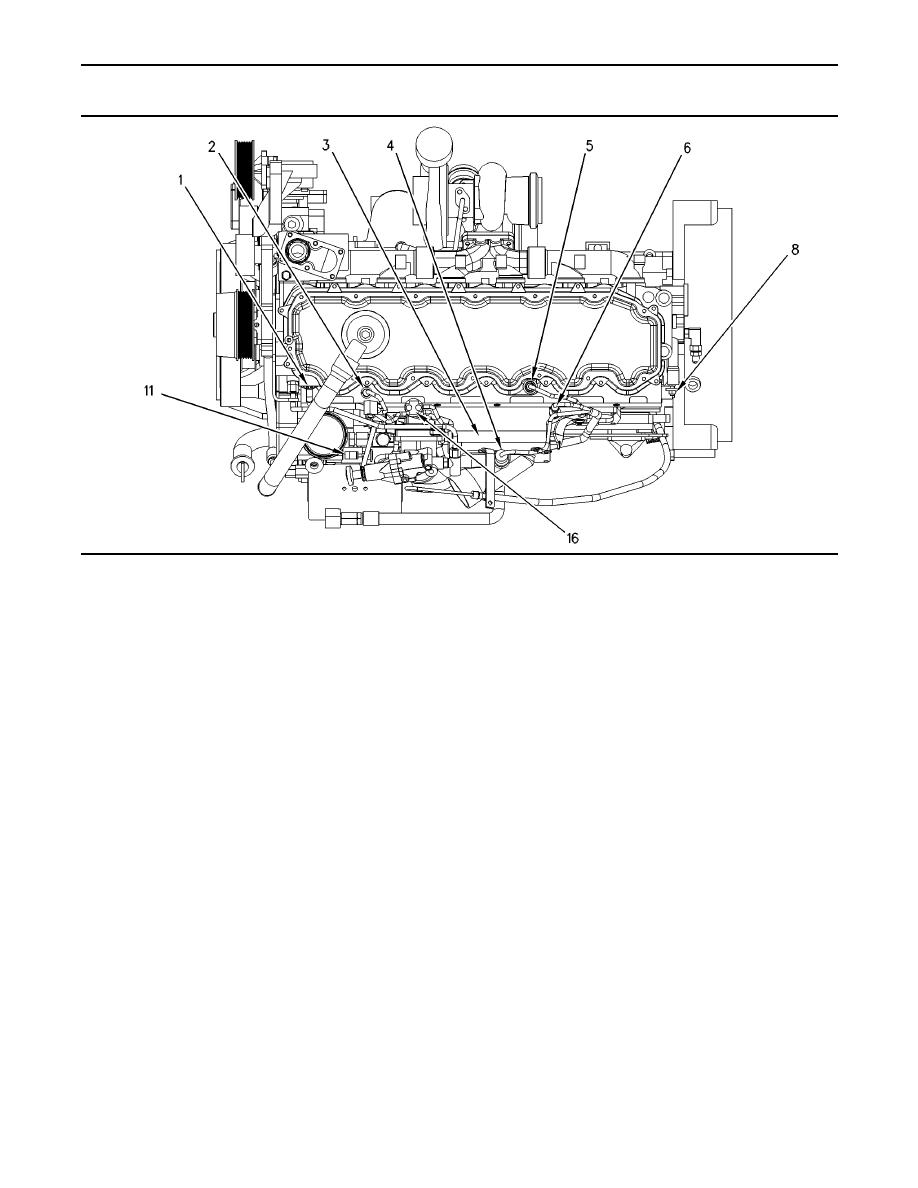 |
|||
|
|
|||
|
Page Title:
Illustration 6 Electronic control system components (top view) |
|
||
| ||||||||||
|
|
 12
TM 9-2320-312-24-2
Systems Operation Section
g00292594
Illustration 6
Electronic control system components (top view)
(11) Injection actuation pressure control
(5) Atmospheric pressure sensor (if
(1) Grommet for injector harness
valve
equipped)
(2) Injection actuation pressure sensor
(16) Relay for the air inlet heater
(6) Boost pressure sensor
(3) Air inlet heater
(8) Engine ground stud connection
(4) Inlet air temperature sensor
Output component
The electronic control system is integrally designed
into the engine's fuel system and the engine's air
inlet and exhaust system in order to electronically
An input component is one that sends an electrical
control the fuel delivery and the injection timing. The
signal to the ECM of the system. The signal that is
electronic control system provides increased timing
sent varies in either of the following ways:
control and fuel air ratio control in comparison to
Voltage
conventional mechanical engines. Injection timing
is achieved by the precise control of the injector
firing time. Engine rpm is controlled by adjusting
the injection duration. The Engine Control Module
Pulse width
(ECM) energizes the unit injector solenoids in
order to start the injection of fuel. Also, the Engine
Control Module (ECM) de-energizes the unit injector
The variation of the signal is in response to a
solenoids in order to stop the injection of fuel.
change in some specific system of the vehicle.
Some specific examples of an input component
Refer to Systems Operation/Testing And Adjusting,
are the engine speed-timing sensors, the coolant
"HEUI Injector Operation" for a complete explanation
temperature sensor, and the cruise control switches.
of the fuel injection process.
The ECM interprets the signal from the input
component as information about the condition,
The engine uses the following three types of
environment, or operation of the vehicle.
electronic components:
Input component
Control component
|
|
Privacy Statement - Press Release - Copyright Information. - Contact Us |